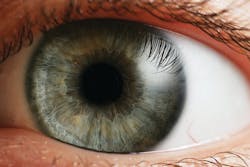As part of his State of the Union address in early February, President Barack Obama advocated "comprehensive immigration" reform by establishing a responsible pathway to earned citizenship; and by developing a system to attract the best talent of the world to the United States.
The President has made it clear that immigration reform is one of his top domestic priorities, and he has encouraged swift action by both sides of the aisle to ensure a pathway to citizenship for 11 million undocumented immigrants. In exchange for passage of this plan, Obama has offered better enforcement of immigration laws as well as heightened border security.
However, the question remains: How will tougher border controls be enforced? Identifying travelers by inspecting travel documents and asking questions has its limitations — not only is it prone to error, but it often results in long delays at border crossings. The U.S. needs a system that provides a high level of security by authenticating the identity of travelers while ensuring smooth flow of travel and commerce and minimizing the intrusiveness of the process.
The solution — one quite familiar to the security industry — lies with biometric identity verification. The most widely used forms of biometric identity verification are face and fingerprint; however, advances in technology now enable more sophisticated approaches, including iris recognition, which are far less prone to error and less intrusive from the traveler’s standpoint.
For border security, biometrics can give governments a new weapon in the fight against illegal immigration, human trafficking, terrorism, drug-smuggling and other illegal activities.
Biometric identity verification has long held the promise of automating immigration and border management; in fact, many governments have already implemented border crossing solutions using biometrics. The majority of these systems rely on fingerprint and facial biometrics, which have provided some level of this benefit but are ultimately constrained by real-world conditions that limit their performance—such as solw processing times that can result in long delays at border crossings.
As with most revolutionary technologies, biometrics is not without its critics, who often cite privacy as a concern; but, used with care, biometric identity verification should enhance rather than conflict with individual privacy and dignity, balancing security, scalability, and a dramatically improved, not to mention safer, traveler experience.
Here are three reasons why iris recognition has the potential to revolutionize border management:
1. Accuracy: When compared against other biometrics, iris recognition is by far the most accurate. Accuracy can be measured in various ways, and is generally some combination of failure-to-acquire, failure-to-enroll, false positive, and false negative rates. Historically, iris has distinguished itself with an exceptionally low false positive rate, making it well-suited to conclusive one-to-many matching as well highly accurate one-to-one authentication.
A recent US Government study demonstrated that for a given false negative identification rate, iris recognition is 100,000 times more resistant to false positive identifications than face recognition. In border crossing environments, iris can also provide significantly decreased failure-to-acquire, failure-to-enroll, and false negative rates.
2. Throughput: Real traveler throughput for a biometric system is a complex calculation that includes the time required to show how a system should be used, the biometric capture time itself, and the number of repeated attempts necessary for a successful capture due to incorrect matching results, poor understanding of how to use the system, or less-than-ideal conditions. High throughput, of course, is critical for scalability at a border crossing, but it is also important for improving the traveler experience, and for allowing a fixed number of border officers to focus more of their efforts on persons of concern, rather than spreading their attention thin on the large majority of travelers, who pose little or no risk.
3. Traveler Perception: When deployed properly, iris recognition can improve the sentiment of travelers toward the use of biometrics at the border. This is due to a combination of factors: because iris recognition is a non-contact process, it is hygienic; modern stand-off iris recognition systems are non-invasive, similar to having a photo taken for a passport; and, as already outlined, travelers will enjoy a marked decrease in wait times and reduction in the need for manual intervention.
Chuck Yort is VP and General Manager of Identity Solutions at AOptix, a privately held company based in Campbell, Calif., with offices in Washington D.C., Europe, the Middle East and Southeast Asia. To request more information about AOptix, please visit www.securityinfowatch.com/10373961
About the Author
Chuck Yort
Chuck Yort is VP and General Manager of Identity Solutions at AOptix (www.aoptix.com), a privately held company based in Campbell, Calif., with offices in Washington D.C., Europe, the Middle East and Southeast Asia.
